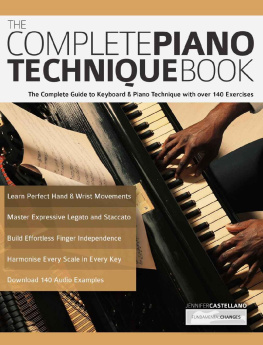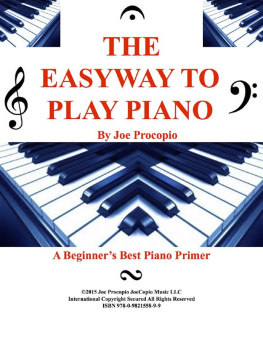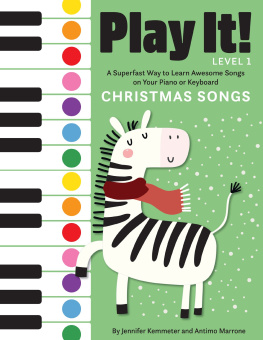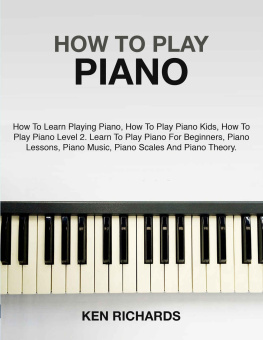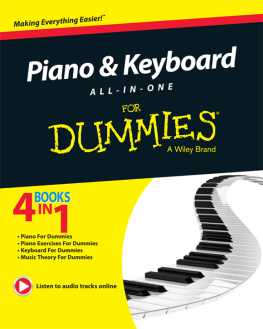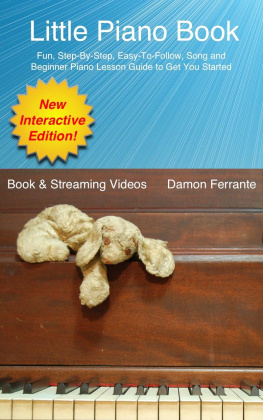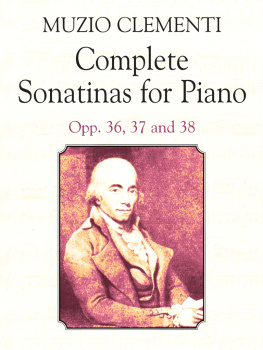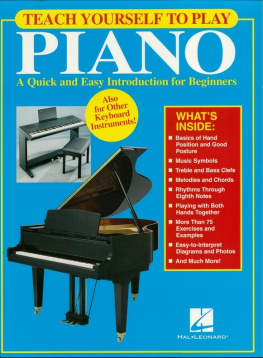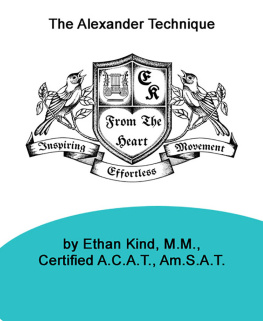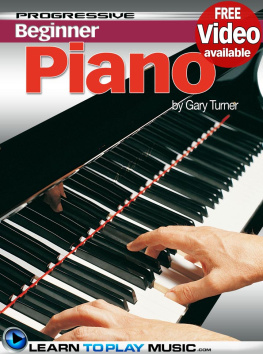The audio files for this book are available to download for free from www.fundamental-changes.com . The link is in the top right-hand corner. Click on the Guitar link then simply select this book title from the drop-down menu and follow the instructions to get the audio.
We recommend that you download the files directly to your computer, not to your tablet, and extract them there before adding them to your media library. You can then put them onto your tablet, iPod or burn them to CD. On the download page there are instructions and we also provide technical support via the contact form.
Chapter One Getting Ready to Play
Believe it or not, height and distance have a tremendous effect on your piano playing. Sitting at the wrong height, too close, or too far away from the piano can not only cause discomfort but can even result in injury. Piano playing should never feel uncomfortable, so it is extremely important for us listen to what our bodies tell us.
Achieving Correct Height and Distance from the Piano
Often, people sit either too high or too low at their piano. The ideal height allows the hands, wrists, and forearms to be in a straight line as this position places the least amount of stress on the forearm where the muscles that move the fingers are located. Long tendons extend from these muscles through the wrist and attach to the small bones of the fingers.
If you sit too low, with your arms lower than the keyboard, you will constantly work hard to create a strong sound because you will be fighting their weight. If you sit too high, however, this will result in your fingers playing at an uncomfortable angle.
Sitting the correct distance from the piano allows you to access all the keys on the keyboard with ease.
Most people also tend to sit too close to the keyboard, which makes it more difficult to move from one piano register to the next because your arms are not able to freely move about. To check whether youre the correct distance away from the piano, see if your elbows can touch one another when your hands are placed on the white notes directly in front of you. If your elbows are unable to touch, move further back.
Moving Around the Keyboard
The first two exercises in this book will help you check your height and distance from the piano and should be played at whatever tempo is comfortable for you.
If you dont have an adjustable piano bench, try sitting on books or something solid to adjust your height. Play the exercises, make small adjustments to your height, and dont stop until you find what is most comfortable for you.
The exercise below is to be played using only fingers 1, 2 and 3 of your right hand. It might seem unusual, but the right hand often does cross over into the lower registers. As you play lower, lean your body to the left to help you gain better access to the notes.
Note that the 8va sign written below the notes indicates that you should play the notes one octave below what is written.
Example 1a

How did you find playing the notes in the low registers? Were you able to reach all the notes?
If you found that you needed to slide yourself up or down the piano bench to reach the lower notes, try sitting closer to the front edge of the bench. This allows more space between the front of the bench and your legs, and allows you to lean toward the lower register and reach those lower notes more easily.
Next, we will do a similar exercise but now using the left hand. This exercise again uses fingers 1, 2 and 3 and is based on the notes C, D and E played in all registers above middle C. As you play higher lean your body to the right to help you gain better access to the notes.
The 8va sign written above the notes in measures 3 and 4 indicates to play the notes one octave higher than written.
Example 1b

Once you are comfortable playing the previous two exercises, try the next exercise that uses alternating hands. The exercise is based on a broken C Major chord (notes C E G) which you will play from low to high and back down again.
Begin by leaning your body to the left. Once your hands arrive at the middle you should be sitting up straight. When your left hand moves past the middle of the keyboard, you will start leaning to the right.
Set the metronome so that an 1/8th note is equal to 200bpm.
Note: LH indicates the left hand, and RH indicates the right hand.
Example 1c

Now reverse the exercise to play the notes descending and begin by leaning to the right. Your body follows the direction of the notes.
Example 1d

You can easily practice this exercise with different broken chords, such as a G Major (G B D) and an F Major (F A C). More experienced players can practice this exercise with all 12 major chords.
Pay attention to how your body moves as you play in the wider registers, compared to when you play in the middle of the keyboard.

